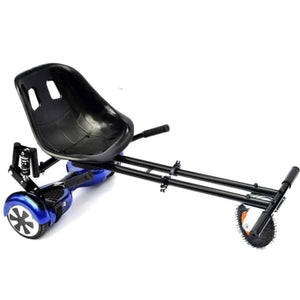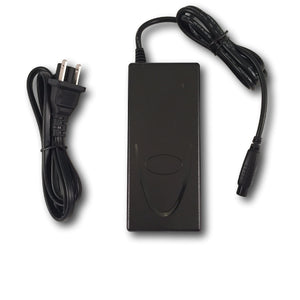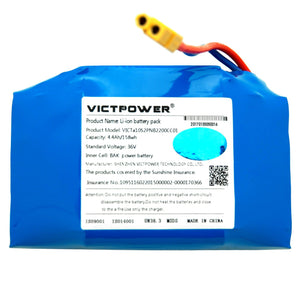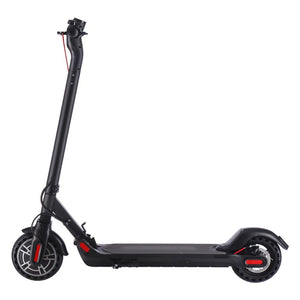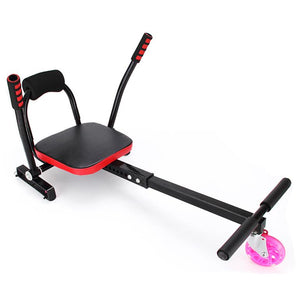Off-Road Hoverboard for Sale
Off-Road hoverboards are a favorite among hover board enthusiasts as they offer a high quality board that performs great on all surfaces and terrains. Off road hover boards are generally the most durable hoverboards you can buy and give you the best range, portability as well as durability.

Off-road hoverboards are perhaps one of the most multifaceted pieces of transport technology to be invented in a long time.
Walk your pets, get a load off strenuous work, clean your house, go for a cruise down the street, have some fun.
The pick is all yours because the options are endless.
You have to wonder, though - how can the smooth gliding experience of the hoverboard be transferred to an off-road environment?
If you’re a daredevil, or merely curious, you want an adventure. Grass, sand, and gravel all seem like they can be a heck of a good time.
But can these all-terrain hoverboards handle it?
They sure can if you buy the right hoverboard.
In this guide, we’ll discuss all things about the off-road hoverboard:
- Why Off-Road?
- The Features That Matter
- Hoverboard Moves That Will Make The Difference
- Tips For Riding Your Hoverboard Off-Road
- The Ultimate Off-Road Hoverboard FAQ
- Our Top Pick For An Off-Road Hoverboard
Why Off-Road?
Some of us simply have the adventurous bug.
More excitement. More picturesque scenery. More adrenaline-infused exploits.
It’s all attractive.
But beyond that, owning an offroad hoverboard has several advantages:
- Master all terrains - Off-road hoverboards are pointedly designed to handle multiple environments and surfaces. They can handle bumpy pavements, gravel, grass, sand, dirt paths, snow paths, and steep inclines. This means that you are not restricted to any one area, and you can get maximum use out of your board.
- Increase your agility - Riding your board in an off-road setting allows you to refine the quickness with which you move your body. As opposed to a standard, smooth surface, you have to be more resourceful with your body movements to maintain balance and coordination. The result is greater agility and dexterity that can be transferred to other areas in your life.
- Eliminate noisy distractions that come with riding on-road - There’s nothing like a loud vehicle that is moving with unnerving speed inches away from you, to ruin the hoverboard riding experience. When you’re off-road, you’re unlikely to find any vehicles in view, and you can ride freely without these added distractions.
- Get a better workout - Any hoverboard will give you a decent cardiovascular workout. But riding offroad intensifies your level of activity and multiplies the resulting benefits that come with exercise. Rough surfaces will require more exertion on your part, which leads to more dynamic fitness.
The Features That Matter

The off-road hoverboard is designed to facilitate a smooth ride over demanding terrain by incorporating some very unique features.
Whether you’re an energetic go-getter or an absolute klutz, this board is jam-packed with components that will instantly give you an edge in an off-road setting.
Here are the unique features that make the off-road hoverboard such a powerful vehicle:
Battery Capacity and Quality
This is perhaps the most critical component of any hoverboard.
And it is even more critical for a board designed explicitly for treacherous terrain.
If you know a thing or two about the hoverboard technology, you know that:
- It is battery powered and rechargeable
- Substandard batteries are prone to explosions and are therefore, hazardous.
In light of this, hoverboard manufacturers, as well as regulatory bodies, have decided that the Samsung lithium-ion battery pack is the gold standard for powering the smartboard.
All our boards, including the off-road hoverboard, use these top tier batteries for some critical reasons. They not only have a 10% higher capacity than traditional Chinese battery packs, but they are safer to use.
This increase in capacity means that you can expect higher power and mileage. Mainly when riding off-road, these benefits can save you many inconveniences.
We can’t imagine that anyone would want their excursions to be cut short by a power failure.
Or worse yet, an explosion from faulty batteries.
These unpleasant surprises are uncalled for and can be avoided with the right battery pack.
Turning Ability and Radius
Let’s be completely honest; you’re not interested in an offroad hoverboard to simply move back and forth.
You want to do all the fancy tricks that Youtube gurus are displaying in their viral videos. And you want to be able to maneuver corners impressively and without having done so with force.
The turning ability and radius of the hoverboard is what will determine how easily this happens.
What influences the turning ability?
Well, it’s a bit tricky.
There’s this misconception out there that off-road hoverboards need a massive set of inflatable wheels.
The problem with that is, smaller wheels not only offer better maneuverability but more significant acceleration. On the opposite spectrum, larger wheels are better equipped to handle obstacles.
This is why our signature offroad hoverboard, with an 8.5-inch wheel, offers the perfect balance.
Climbing Angle
Similar to turning ability, the climbing or maximum slope angle is vital for off-road hoverboards.
These terms sound like complicated geometry, but they make the magic happen. That is the magic of flying uphill or handling any sort of incline.
A standard hoverboard will neither function effectively nor remain intact when made to traverse tricky terrain. On the other hand, an off-road hoverboard is designed to master both the ascent and descent of slopes.
Appropriate wheel size
We’ve touched briefly on wheel size, but let’s get into why it’s an important consideration.
The most insightful position is to look at the pros and cons of the varying wheel sizes.
Small 6.5-Inch to 7-Inch Wheels
- Small wheels offer more significant instantaneous acceleration. This is because they require less energy to get up to speed. They will also remain swiftly and uniformly in motion unless met with an obstacle.
- Small wheels turn better, quicker, and with more efficiency. They don’t require large spaces or a massive turning radius to navigate curbs quickly.
- Small wheels are not suited for rocky terrain. Let’s imagine that a rock meets the 6.5-inch wheels of your hoverboard while you’re riding through an already destructive path. The immediate reaction would be a jolt and a subsequent loss of control of your hoverboard. You can end up hurting yourself pretty badly.
- Smaller wheels offer a lower profile. This means that there will be less wind resistance and a little more stability as the board will be closer to the ground.
Large 10 Inch Wheels
- Large wheels (beyond looking crazy cool) traverse obstacles with little resistance. This is ideal for off-road as the hoverboard can dip into holes and pass over twigs, rocks, and other debris without any jolting or discomfort.
- The extra weight of large wheels cuts off into power economy and acceleration. This is disadvantageous where initial speed is concerned.
- While smaller wheels have more instant acceleration, larger wheels overcome friction better, and so can make up the initial speed deficit very quickly. This means that it can go faster, not instantly, but after a sustained period.
- Larger wheels make for a stiffer and harsher ride. This is because the bulkiness offers less flexibility than small wheels.
Medium Sized 8 Inch Wheels
- Medium size wheels are the perfect go-between - Being right smack in the middle, they offer the best of both worlds. They bring out all the benefits and cancel out the disadvantages of both small and large wheels.
Range
Your range can be affected by how you use the hoverboard and not necessarily it’s intrinsic features.
Let me explain.
You can get higher mileage out of a more powerful battery, but that’s just one facet.
The speed at which you travel and the surfaces that you navigate will also affect how your power holds up. The best bet is to ensure that your board comes with a top-notch Samsung battery pack so it can withstand all the traits of tough turf.
Portability
Hoverboards are universally small and compact.
So, in general, they all have a degree of portability.
However, an off-road hoverboard should be less bulky, so it isn’t a burden to carry.
Even regular hoverboards can weigh in at upwards of 20 pounds. While that doesn’t seem like much to handle, it can be quite a downer if you’re in an off-road setting, and you want to carry your hoverboard for a greater distance or an extended period.
Because of the added features, it can be difficult for an off-road hoverboard to meet the portability criteria. You can always get a supporting hoverboard carrying case to ease the burden.

Speed
While speed can be dangerous, particularly in tricky terrain, some people like to know that their hoverboard can handle some decent acceleration.
Off-road excursions are more about the experience and less about how quickly you get to the other side.
Nevertheless, speed can come in handy in less offbeat areas.
Durability
An off-road hoverboard needs to be able to take a beating.
The surfaces aren’t smooth, so scratches, dents, and bruises are a real possibility.
But you don’t want that, do you?
If you’re dishing out hundreds of dollars for a hoverboard that is specific to off-road riding, you expect it to come through for you even when it takes some hits.
The quality of the materials that it’s made of is what will make the difference.
Safety Features
Beyond being able to perform like a rockstar, you want your hoverboard actually to keep you safe.
Even in the most unfriendly of surfaces, an off-road hoverboard should be equipped with inbuilt safety features.
Here’s a checklist that you can use as a guideline:
- LED safety lights - If you’re intending on riding at night, this can come in handy. It will help you see what’s ahead of you and guide you away from any obstacles. But if you’re sticking to daytime journeys, it shouldn’t be a deal-breaker.
- Power status indicator - It’s always a good idea to have some indication of what your power status is. Most hoverboards come with this feature, so it shouldn’t be demanding criteria to meet.
- UL 2272 certification - This is a certification by Underwriters Laboratories. It’s the only one of its kind, and it’s there to regulate the electrical components of your hoverboard so that you remain safe. This is particularly important for off-road as your board will be more prone to impact. If the hoverboard is not wired correctly or the battery is defective, this impact can cause the already volatile battery to explode.
- A manufacturer’s warranty - This is not a physical safety feature but a safety net for your wallets. Off-road hoverboards are more prone to damage, so it would be wise to have a warranty that covers losses if one occurs.
Hoverboard Moves For Off-Road Riding
You’ve got a highly efficient device that proves to be a formidable match for rocky roads.
Is your work done? Not exactly.
Yes, all hoverboards are self-balancing, intuitive, and borderline genius gadgets. But, the duty is still on you to pick up, practice, and master the critical moves.
There’s not much to it at all.
You simply have to learn:
- How to move linearly (back and forth)
- How to turn
- How to handle slopes
- How to do a few neat tricks (optional)
We’ll walk you through all these.
Let’s get to it.
- How to Move Back and Forth On Your Hoverboard
The first step is to mount your board one foot at a time. Ensure that the board is in a perfectly horizontal position and not tilted in any particular direction. This will help you to get a solid footing before moving.
If you need some help, feel free to hold on to a fixed surface like a pole or a wall to help you hop on.
Maintain your balance by evenly distributing your weight across the length of the board.
Moving back and forth is a matter of gently shifting your weight and bending your ankles.
To move forward:
- Tilt your toes and ankles forward
- Shift your weight toward the front of the board to increase speed in that direction.

To move backward:
- Press the heel of your feet backward
- Shift your weight toward the back of the board to increase speed in that direction
And that’s it! It doesn’t get any simpler.
- How To Twist and Turn On Your Hoverboard
Naturally, this is a tad more complicated than rocking back and forth, but it is still quite simple.
Before you start working on the moves that we’re about to get into, spend some time perfecting the basic linear movements.
When you’ve got that under your belt, it’s time to go up a notch.
There is an overall rule for turning and twisting your board:
Whatever direction that you intend to go, push down your feet, and lean on the opposite foot.
It works out that if you want to turn RIGHT, you have to push down on your LEFT foot.
And if you want to turn LEFT, you have to push down on your RIGHT foot.
Try doing this at the pace of a tortoise before experimenting with speed. After you’ve practiced easing into your twists and turns, it will be less complicated and safer to pick up speed.
- How To Master The Ascent and Descent of Inclines
Okay, this is where it gets a bit tricky.
Don’t worry, it’s still easy, just a bit more movement required on your part. Now, it’s important to note that hoverboards, no matter how powerful, won’t fly up a foot tall curb.
What it can do is give you a few inches of climbing ability. Anywhere between 1-5 inches is possible.
Now, let's get into the tricky bit.
There are two ways that you can approach climbing an incline. Your method of choice will depend on the one that comes more naturally to you.
- Picking up some speed, build some momentum, and push your chest forward as you arrive at the curb. The thrusting of your chest in tandem with the energy that you’ve built will have enough force to carry you over the incline.
- Using your most stable foot, simply roll your board one wheel at a time over to the top of the incline. When your dominant foot is already on top of the curb, shift the board to a 180-degree angle. After that, follow through with your other foot. This approach is much slower and may be better suited for those who haven’t yet the courage or skill to speed up. It will also be more useful for a shorter ascent.
How To Get a Handle on Advanced Moves and Tricks
Getting on and off your hoverboard? Got that one down.
Are you moving back and forth? Down.
Are you twisting and turning? Down.
Climbing slopes? Down.
What about some cool tricks?
Well, this is not necessary, but if you do want to perform some sophisticated moves, we want to be sure that you can handle them with ease.
And perhaps, show off a little bit.
But first, we recommend that you become a crackerjack at the basic moves first before graduating to a trick expert.
Now, two superb hoverboard moves will make anyone’s jaw drop. And you will feel like a total champion while doing them.
Increase your confidence and multiply your cool factor with this 180-degree maneuver
Don’t be intimidated; this is so much easier than the geometry may suggest.
So easy that it will only take one line to explain.
While you are in motion, push your feet opposite each other.
And that is all.
Try it. Perfect it. And you’ll live to do it.
Dazzle onlookers with the 360-degree spin
If you haven’t mastered the 180-degree maneuver, stop reading right now because you won’t be able to make this move without it.
You’ve probably already figured it out, but the 360-degree spin is two 180 degree maneuvers back to back.
Start moving.
Do the first 180.
Lean back to pick up some momentum.
Then do another 180 in quick succession.
With these moves, you’ll be the subject of curious stares, endless admiration, and hoverboard envy (if there’s such a thing).
Tips For Riding Off-Road On Your Hoverboard
Knowing right off the bat what you should and shouldn’t can save you a headache or two.
So, we’ve compiled a few of our best tips to help you navigate any off-road terrain without any mishaps.
Here goes:
Take it easy and relax - Relax your body and only contract your muscles when it’s necessary to control your hoverboard. Wherever you’re riding - on grass or over a rock path - you want to be as limber and as flexible as possible.
While your natural response may be to tense up when you come into contact with bumps and ruts on the trail, it is especially important to remain calm in this scenario. It will allow your body to absorb the minor jolts and will make for a more smooth and joyful ride.
It also helps to ease up on the pressure that you place on the footpads. The more weight you have, the higher your speed, so be selective when you decide to use heavier footwork.
Your board will get bruised so don’t sweat the small stuff - It may be impossible to keep your hoverboard spotless and in pristine condition. The whole point of the off-road experience is to get down, dirty, and a tad unruly.
A quality hoverboard indeed crafted built for all-terrain riding will be more durable than usual and may be able to come out of several riding sessions without a scratch. But, if you go in with the expectation that you’ll emerge untainted, you may just be disappointed.
Survey your intended path beforehand - Let’s say that you’re thinking of riding on this off-road trail that you’ve never been on. If you’re not entirely comfortable going in blind, it would be helpful to traverse the path on foot first. This way, you know what to expect, and there are no unpleasant surprises. If there are too many obstacles, you may even choose to clear the path a bit to make way for your hoverboard.
Practice on a smooth surface first - If you’ve owned or ridden a standard hoverboard model, then this may not be necessary. But if you are entirely new to this world of self-balancing scooters, going full force into an off-road experience may not be the best move. Get comfortable with a smooth, bump-free ride first.
When you’re riding downhill, do not lean forward - For many people, this comes naturally. But just in case you’re tempted to thrust forward, remember to shift your bodyweight back to avoid falling or gaining too much speed beyond your control.
Learn how to stop and dismount your board the right way - The intuitive response when you sense that you’re going out of control may be to jump off the board quickly. This move will put you in an even bigger jam. The appropriate way to dismount, regardless of what surface you’re riding on, is too lean in the opposite direction that you’re moving. This countermove puts you back in a position of equilibrium so you can slow down and then get off.
While you’re riding, focus on the path ahead of your and not the board - You may want to look down at your feet to examine your every move. A better strategy is to look several feet ahead of you and survey the area. This will allow you to better decide a plan of attack in terms of where you’ll go and how you’ll navigate obstacles. Try not to be too obsessed with one obstacle that you make yourself oblivious to everything else in front of you.
The Ultimate Off-Road Hoverboard FAQ
You are nothing short of an off-road hoverboard connoisseur.
You know which features matter, why safety is important, and how to secure it for yourself, what moves to do, and how to do them.
There’s not much that you don’t know.
But in case there are some lingering questions, here is the ultimate FAQ sheet for off-road hoverboards.
- What sort of terrain is suitable for an off-road hoverboard?
An off-road hoverboard can handle all terrains. Our RockSaw model can sustain:
- Dirt Paths
- Deep Grass
- Sandy Beaches
- Steep Inclines
- Bumpy Pavement
- Snowy Roads
- Hiking Paths
- And wherever else your curiosity leads you.
- Do off road hoverboards have to be waterproof?
The hoverboard is, in essence, an electronic gadget. It is always a plus when your electronics can withstand some water without getting damaged. StreetSaw’s hoverboards have a waterproof rating of IP54.
How much water can it handle? It certainly can’t sustain a full water bath, but it is enough to give your hoverboard enough protection to weather some rain or splashes of water. The IP54 rating also offers protection against dust.
- Do I need a high-speed hoverboard to navigate harsh surfaces?
Speed is not a feature that is particularly pronounced in a hoverboard that is tailored for off roads. It’s not the primary selection factor for many people.
- Can the hoverboard sustain heavy blows?
Off-road hoverboards are generally stronger than average, so it can certainly handle the rigors of harsher environments.
- Are there any restrictions on where I can go and what I can do on an off-road hoverboard?
There are no restrictions, nothing you can’t do, and no problems. The off-road hoverboard can handle any surface. Of course, safety is always first, so it’s not wise to make any moves that seem risky or out of your control.
- Can’t I achieve the same performance level in an off-road environment with a standard model?
It’s not possible to mirror the highly efficient performance of a hoverboard that is cut out for an all-terrain setting with a standard model. The niche-specific off-road hoverboard is more robust, tailor-built, more durable, and in general, is better equipped as an all-terrain vehicle (ATV).
- How can I recalibrate my hoverboard before I start riding again?
This is a simple fix. Hold the power button for 5-10 seconds while the board is on a level surface.
Our Top Off-Road Hoverboard Pick
Do you know what’s more complicated than crafting a hoverboard that can handle all off-road terrains?
Crafting one that looks so dang good.
Our top pick is …
And this may not come as a surprise to you because we’ve named dropped it a couple of times in this guide.
The RockSaw Off-Road 8.5 inch Hoverboard (All-Terrain)

Nothing we say can do this super board justice.
So let’s get right to the impressive specs:
- 8.5-inch wheels, which is the perfect size for an off-road hoverboard. It’s right at the intersection of everything good about small wheels and everything great about large wheels.
- Bluetooth speakers, so you can listen to your favorite jams.
- Aircraft-grade aluminum alloy tire covers give you maximum durability when riding. You can be sure that nothing is getting through these tires.
- Top speed of 9 mph, and you can switch between 3-speed modes using our mobile app.
- Range of 10 miles so you can travel a pretty good distance.
- UL 2272 Certification because your safety is important to us.
- 5-6 hours of battery life so you can be out and about for an extended period without needing a power source.
- A slope angle of 15 degrees helps to navigate inclines.
- Power status indicator so you know when it’s time to shut down and get some more juice.
See the full list of specs here.
Wrapping Up
The off-road hoverboard is pure magic and sheer bliss.
It looks like it belongs in the garage of a superhero.
And it is indeed a machine of heroic proportions.
If you’re a fireball and a go-getter whose ultimate desire is to go off the beaten path, this is the hoverboard for you.
So don’t hesitate and make the RockSaw - or any other off-road hoverboard - your instrument of adventure.





